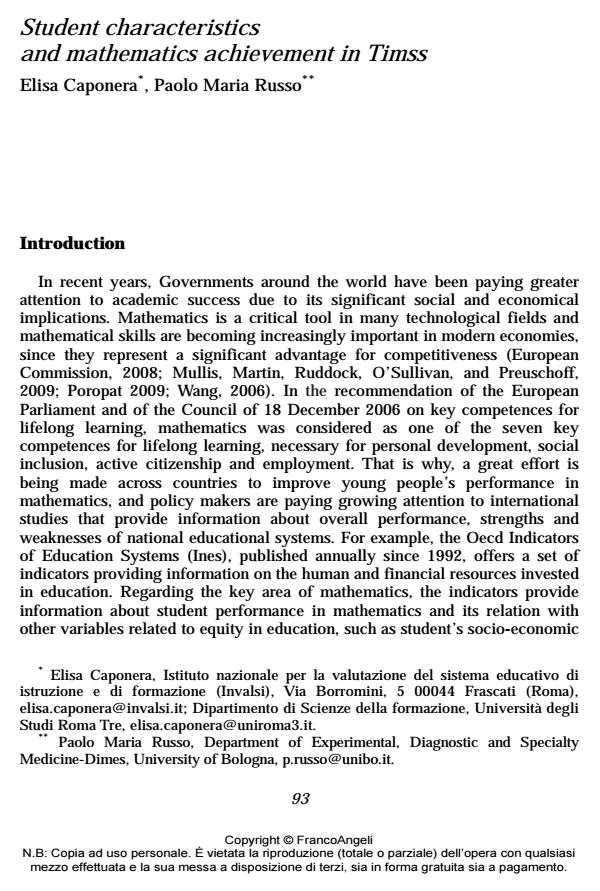Student characteristics and mathematics achievement in Timss
Titolo Rivista CADMO
Autori/Curatori Elisa Caponera, Paolo Maria Russo
Anno di pubblicazione 2015 Fascicolo 2014/2
Lingua Italiano Numero pagine 13 P. 93-105 Dimensione file 76 KB
DOI 10.3280/CAD2014-002008
Il DOI è il codice a barre della proprietà intellettuale: per saperne di più
clicca qui
Qui sotto puoi vedere in anteprima la prima pagina di questo articolo.
Se questo articolo ti interessa, lo puoi acquistare (e scaricare in formato pdf) seguendo le facili indicazioni per acquistare il download credit. Acquista Download Credits per scaricare questo Articolo in formato PDF

FrancoAngeli è membro della Publishers International Linking Association, Inc (PILA)associazione indipendente e non profit per facilitare (attraverso i servizi tecnologici implementati da CrossRef.org) l’accesso degli studiosi ai contenuti digitali nelle pubblicazioni professionali e scientifiche
In the present study, the relationship between student characteristics and mathematics performance was evaluated using a structural equation modeling approach. Italian students participated at Timss 2011 field test (N = 1264; 52% female, mean age: 13 years and 10 months ± 6 months) completed a questionnaire including measures of socio-economic and cultural background, general reasoning ability and self-concept in mathematics and the Timss mathematics achievement test. A mediation structural equation model assessed the direct and indirect effects of the general reasoning ability test and socio-economic and cultural background through the mediation of selfconcept in mathematics. The results showed that all measures were significantly associated with mathematics achievement test, furthermore selfconcept partially mediated the effects of socio-economic status and general reasoning ability.
Parole chiave:Timss, mathematics achievement, student characteristic, self-concept, cognitive ability.
Elisa Caponera, Paolo Maria Russo, Student characteristics and mathematics achievement in Timss in "CADMO" 2/2014, pp 93-105, DOI: 10.3280/CAD2014-002008